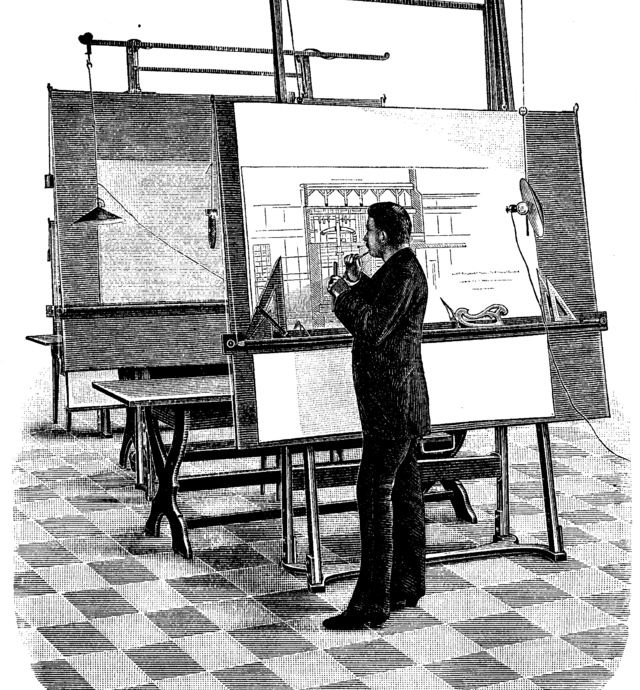The architecture profession continues to grow along with a gradually recovering economy, based on the results of the 2014 Survey of Architectural Registration Boards, conducted by the National Council of Architectural Registration Boards (NCARB).
The 2014 survey of U.S. jurisdictions indicates that there are 107,581 architects in the United States, a 1.6 percent increase from 2013. The number of architects has grown 3.1 percent since 2011.
“Our survey documents an architecture profession that is thriving,” said Michael J. Armstrong, CEO of NCARB. “NCARB will continue to spearhead changes in architectural licensing standards to support a growing architecture industry.”
Recent Bureau of Labor Statistics data also points to growing opportunities for architects in the American economy. Architectural and engineering services added 5,000 new jobs in September and 2,900 new jobs in October.
All states, the District of Columbia, Guam, Puerto Rico, and the U.S. Virgin Islands require individuals to be licensed (registered) before they may call themselves architects or contract to provide architectural services. Data collected for the fall 2014 Survey of Registration Boards are from all 54 U.S. jurisdictions and reflect registration levels from July 2013 through June 2014.
To become licensed, most jurisdictions require a professional degree in architecture and completion of an internship program. NCARB’s Intern Development Program (IDP) is a comprehensive program to provide interns with the knowledge and skills needed to practice architecture. All jurisdictions require completion of the Architect Registration Examination (ARE). Most states also require continuing education to maintain a license.
NCARB assists registration boards by leading the development and application of licensing standards and the credentialing of architects. The NCARB Certificate program is a program that allows architects to expedite reciprocity – the ability to offer architectural services in different jurisdictions after earning an initial license.
As part of the survey report, NCARB also compiles its own data on the number of reciprocal licenses earned each year, reporting 119,200 reciprocal licenses in 2014. That is down slightly—about 2 percent—from the previous year. “As the economy improves, NCARB suspects that many architects are finding new projects close to home without having to go to other jurisdictions,” Armstrong said. “We’ll keep an eye on this indicator as the economy moves forward.”
In total, the NCARB 2014 Survey reports that the 107,581 architects hold 226,181 licenses nationally. California reported the highest number of resident architects, at 16,618 total professionals, as well as the highest number of total registrations (resident plus reciprocal licenses) at 20,595.
Related Stories
Cultural Facilities | Mar 26, 2024
Renovation restores century-old Brooklyn Paramount Theater to its original use
The renovation of the iconic Brooklyn Paramount Theater restored the building to its original purpose as a movie theater and music performance venue. Long Island University had acquired the venue in the 1960s and repurposed it as the school’s basketball court.
Adaptive Reuse | Mar 26, 2024
Adaptive Reuse Scorecard released to help developers assess project viability
Lamar Johnson Collaborative announced the debut of the firm’s Adaptive Reuse Scorecard, a proprietary methodology to quickly analyze the viability of converting buildings to other uses.
Security and Life Safety | Mar 26, 2024
Safeguarding our schools: Strategies to protect students and keep campuses safe
HMC Architects' PreK-12 Principal in Charge, Sherry Sajadpour, shares insights from school security experts and advisors on PreK-12 design strategies.
Green | Mar 25, 2024
Zero-carbon multifamily development designed for transactive energy
Living EmPower House, which is set to be the first zero-carbon, replicable, and equitable multifamily development designed for transactive energy, recently was awarded a $9 million Next EPIC Grant Construction Loan from the State of California.
Museums | Mar 25, 2024
Chrysler Museum of Art’s newly expanded Perry Glass Studio will display the art of glassmaking
In Norfolk, Va., the Chrysler Museum of Art’s Perry Glass Studio, an educational facility for glassmaking, will open a new addition in May. That will be followed by a renovation of the existing building scheduled for completion in December.
Sustainability | Mar 21, 2024
World’s first TRUE-certified building project completed in California
GENESIS Marina, an expansive laboratory and office campus in Brisbane, Calif., is the world’s first Total Resource Use and Efficiency (TRUE)-certified construction endeavor. The certification recognizes projects that achieve outstanding levels of resource efficiency through waste reduction, reuse, and recycling practices.
Office Buildings | Mar 21, 2024
Corporate carbon reduction pledges will have big impact on office market
Corporate carbon reduction commitments will have a significant impact on office leasing over the next few years. Businesses that have pledged to reduce their organization’s impact on climate change must ensure their next lease allows them to show material progress on their goals, according to a report by JLL.
Adaptive Reuse | Mar 21, 2024
Massachusetts launches program to spur office-to-residential conversions statewide
Massachusetts Gov. Maura Healey recently launched a program to help cities across the state identify underused office buildings that are best suited for residential conversions.
Legislation | Mar 21, 2024
Bill would mandate solar panels on public buildings in New York City
A recently introduced bill in the New York City Council would mandate solar panel installations on the roofs of all city-owned buildings. The legislation would require 100 MW of solar photovoltaic systems be installed on public buildings by the end of 2025.

















